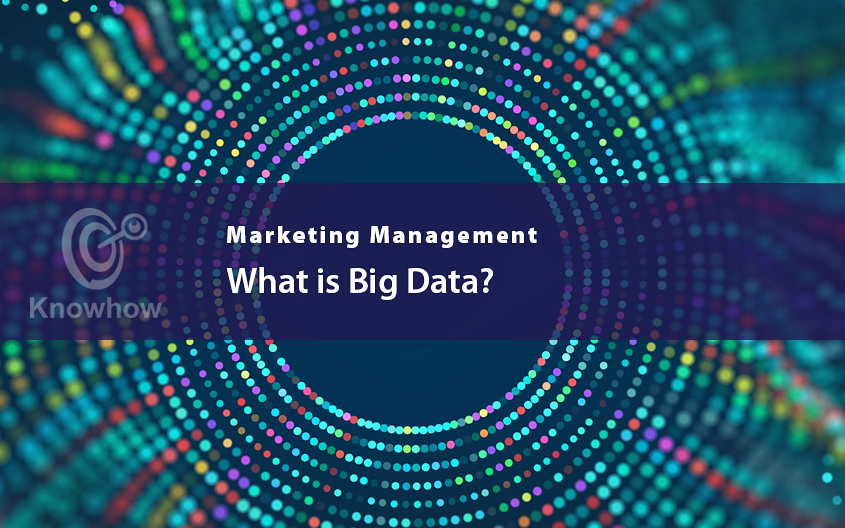
Big data is a term that was popularised in the 1990s thanks to John Mashey, a US entrepreneur and computer scientist.
But, what is big data?
Big data is what we call datasets that are much larger than typical datasets. For example, an average dataset size is a couple of gigabytes. We can’t define the exact size of big data, but it can go from a couple of terabytes, up to a few exabytes.
In case you didn’t know, one exabyte is equivalent to 1 billion gigabytes. These large datasets usually exceed the ability of a common data-processing software.
Nowadays, big data is not only what we call giant datasets. We also use it to describe all the analytics that revolve around it. The main focus is not its size, although today’s datasets are indeed larger than before. Big data has a lot of practical uses today – in healthcare, education, IT, etc.
Big data is quite important because it allows us to discern patterns and make conclusions about everyday life. Companies can use that information to improve their services and adjust them accordingly.
To be able to do this, we need to work with a lot of information, aka big data. Only then can we deem our results reliable and credible.
The Historical Background of Big Data
As we said, the term ‘big data’ wasn’t in use until the 1990s. However, huge datasets have existed since the 1960s. People started realising the importance of analytics in the business world and started exploring it.
With the rise of Facebook and other worldwide social networks and platforms, came the dawn of big data analytics. The amount of data that companies could gather from these platforms was overwhelmingly large. Because standard statistical software couldn’t handle it, new ones had to rise. The first software that could handle large sets of data was Hadoop, and it was created in 2005. Hadoop allowed its users to store and process big data efficiently and inexpensively.
Thanks to the World Wide Web, the average dataset size is growing every day. Information is being gathered by every company, object, and device out there, voluntarily or not.
However, this is not such a bad thing. As we said, the more information we have, the more reliability we have in our results and data analysis.
Big Data Characteristics the Three V’s
The best and easiest way to understand big data is through its 3 main attributes, or the three V’s.
Volume
Volume tells us how much data we’re dealing with. This aspect of big data is actually what makes it stand out from the rest. Big data is data that has high volume and needs more storage space than typical data.
Variety
Variety explains what kind or type of data we’re working with. There are many different types of data – number, text, audio, photo, video, etc. Knowing what type of data we’re dealing with helps us when choosing the method of analysis and interpreting the results.
Data can be structured, semi-structured or unstructured.
Structured data is explicitly pre-defined and easily searchable by algorithms. For example, structured data can be spreadsheets, numbers or dates.
Then there is semi-structured and unstructured data. This type of data is usually human-generated and text-heavy. Examples include texts, images, videos, and so on.
Velocity
Velocity is the speed at which data can be stored and processed. Today, most databases operate in real-time or near real-time.
There are two more attributes that were added later – value and veracity.
The value of our data tells us how meaningful it is for us. If the data has no value, it means we can’t make anything of it. The data has to have a quality within it that we can exploit.
The veracity of our data shows how much we can rely on it. If the data we’re using isn’t trustworthy, then the conclusions we get out of the analysis aren’t valid either.
The Practical Use of Big Data
The data industry is rapidly growing because of the expectedly high demand. Huge corporations such as Oracle and Microsoft have invested billions into this industry. The data is undoubtedly crucial to many businesses, which explains why the demand is so high.
There are many ways in which big data helps businesses. Here are some of them:
- to improve their products and services – Plenty of companies collect customer reviews in order to see what their experiences were like with their products. Then they use this information to become better and accommodate their users. Customer satisfaction is the priority of every major company.
- to create learning models for machines – Big data allows machines to study patterns, just like humans do. That way, they can learn to perform numerous useful tasks.
- to design new products – Companies use data when working on new products. They see what users liked and didn’t like in the past to come up with ideas and predict users’ reactions.
- to detect frauds and prevent hacking – When using big data, security systems can easily detect irregularities that can indicate frauds. This enables businesses to act on them quickly.
Almost all of the branches make use of big data. These include:
- government
- healthcare
- education
- manufacture
- information technology
- media
- and many more
What the Big Data Process Involves
There are three main steps in the big data analysis process.
- The first step is gathering and integration of data. In order to do this, you’ll need special programs that can support the quantity of big data. Big data is usually around a couple of terabytes in size, but it can go up to an exabyte. After you’ve integrated the data properly, you can forward it to your analyst.
- When you integrate your data, you’ll need to store it someplace safe. Most users opt for the cloud storage, but you can choose to do so wherever you want.
- The final step is the actual analysis of the big data. When you come across an interesting discovery, you can choose to explore it further and put it into use.
The Shortcomings of Big Data
Big data is quite helpful, but it has its own problems.
The first one is obviously its size. It’s difficult to store it and process it. Besides that, it’s basically growing every day, which means that it can outgrow all of the current software.
And not just that it takes a lot of time to process big data, especially the unstructured data. It requires a lot of work, which further requires a lot of people that will work on it. And this is just during the preparation for the analysis. If the data is not organised, then the results of the analysis won’t be clear and we’ll lose the veracity aspect of big data completely.
Related content:
Brand Management Knowhow – learn more about branding with our collection of educational articles.
From promotional pens, printed mugs, custom promo cotton tote bags, sports bottles and printed notebooks we are sure you will find the perfect promotional products to help build your brand. If however, you require further information or have any specific questions, don’t hesitate to give a member of the GoPromotional team a call on 0800 0148 970 or simply email us today.






